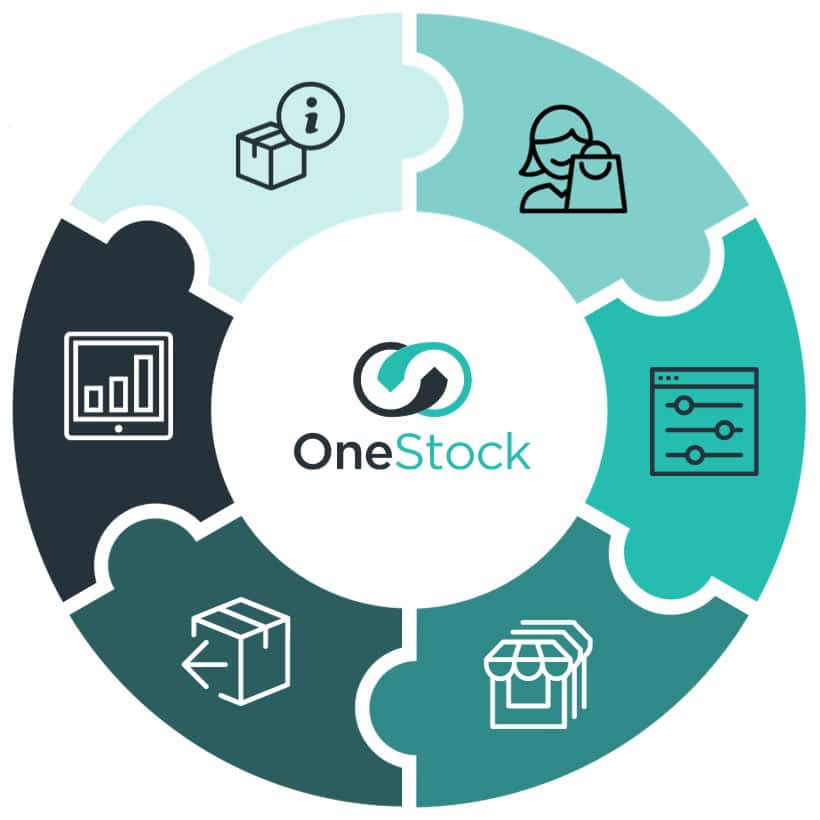
Is stock visibility the key to retail success?
The adage “knowledge is power” has never rung truer when it comes to stock management. The inventory visibility offered by an Order Management System can have a transformative impact on this ever-critical facet of retail operations, allowing businesses to operate with precision and efficiency.
Understanding stock visibility
Stock visibility, also known as ‘unified stock,’ refers to the real-time accessibility and accuracy of inventory data across all channels. It goes beyond merely tracking stock levels, encompassing the ability to provide stakeholders with a comprehensive, up-to-the-minute view of product availability.
Unified stock optimises operational efficiency when all stakeholders, from warehouse staff to customer service representatives, can rely on a single, accurate source of inventory information. This, in turn, leads to faster and more accurate order fulfilment, reducing errors and enhancing the overall efficiency of the supply chain.
Accuracy is essential for customer satisfaction. When customers can trust that the information they receive about product availability is correct, it fosters trust and enhances their overall shopping experience.
Challenges in achieving stock visibility
The abundance of sales channels, including brick-and-mortar stores, online platforms and mobile applications, poses a significant challenge for maintaining consistent inventory visibility. When each channel has its own unique set of data, it can lead to discrepancies and potential customer dissatisfaction.
These discrepancies in inventory data can result in over-selling, stockouts, or inaccurate order fulfilment. This not only impacts customer satisfaction but also contributes to financial losses and erodes a brand’s credibility.
The need for real-time visibility
In an era of instant gratification, consumers expect real-time information. The inability to provide up-to-date stock information can result in missed sales opportunities, customer frustration and a tarnished brand image.
Order Management System solutions such as OneStock address these challenges head-on, offering a comprehensive solution to enable transparent stock visibility across diverse retail landscapes.
Achieving reliable unified stock information with OneStock
OneStock OMS provides reliable inventory visibility by seamlessly integrating data from all sales channels. This includes online platforms, physical stores and other stock locations, including in-transit stock and future stock. By consolidating all these data sources, OneStock ensures a unified and coherent view of inventory, eliminating the silos that often lead to discrepancies.
To achieve reliability in unified stock, real-time updates are at the core of OneStock Order Management System. The solution ensures that any change in inventory status, whether triggered by a sale, restocking or returns, is immediately reflected across all channels. This real-time synchronisation is fundamental in providing accurate and up-to-the-minute information to both customers and internal stakeholders.
Thanks to this reliable view of all available stock, OneStock offers one of its standout features: its dynamic order orchestration capability. Here, thanks to a reliable unified stock combined with rules set by the organisation, the OMS intelligently orchestrates orders to the most strategically located fulfilment centre. This dynamic approach prevents stockouts and ensures that orders are fulfilled from the most optimal location, minimising shipping costs and delivery times.
The reverse process is also managed efficiently. Returns are an inevitable part of retail, so OneStock’s Order Management System streamlines the returns process across channels, ensuring that returned items are quickly reintegrated into available stock. Real-time updates extend to the post-returns phase. OneStock ensures that stock levels are promptly adjusted after a return is processed, preventing inaccuracies that can result in overselling or underselling scenarios.
OneStock Order Management System overview
Inventory visibility
Accurate, real-time information about the availability and location of stock across your network, including future stock that is in transit or on order.
Analytics and reporting
Understand what’s working and what’s not, so you can take advantage of opportunities for sales growth, and improve order processing for increased operational efficiency and better customer experiences.
Returns management
A full range of return options to meet all customer needs, regardless of the sales channel used to place the order.

Omnichannel customer journey
Consistent shopping experiences for online and in-store customers, including reliable delivery promises, omnichannel fulfilment and return options, and centralised customer support.
Order orchestration
Highly customisable orchestration rules and machine learning algorithms ensure your order fulfilment processes are effectively optimised to fit customer specificities and business strategies.
Dynamic store fulfilment
Leverage your network of physical retail stores to fulfil omnichannel customer orders faster.
Best practices to benefit from unified stock
Implementing a robust Order Management System like OneStock allows businesses to benefit from reliable inventory visibility. But implementation requires careful planning and execution.
First, it is important to make sure that the OMS seamlessly integrates with ERP and POS systems for a cohesive and efficient operational ecosystem. A seamless integration is not just about connecting systems; it’s about creating a unified data environment. OneStock’s OMS is designed with adaptability in mind, ensuring compatibility with a wide array of ERP and POS systems.
Key considerations include:
- Data mapping: Ensure that data fields align seamlessly between OneStock and existing systems for accurate information flow.
- Real-time updates: Implement real-time data exchange to maintain up-to-the-minute stock visibility.
The implementation phase is a critical juncture where disruptions can impact day-to-day operations. Minimising these disruptions is essential for a smooth transition. Thorough planning and communication are paramount during implementation. Identifying potential challenges and devising strategies to mitigate them will ensure minimal impact on ongoing business processes.
Key considerations include:
- Phased rollout: Consider a phased approach to implementation, allowing for gradual adjustments to minimise disruptions.
- Support: Provide ample training and support to staff during the transition to address any challenges promptly.
Last but not least, an OMS is only as effective as the team use it. Comprehensive training programmes are essential to empower staff with the knowledge and skills required to leverage your OMS effectively. Investment in training is an investment in the long-term success of your OMS implementation. A well-trained team maximises the system’s capabilities, leading to improved stock visibility and operational efficiency.
Key considerations include:
- Specific training: Tailor training programmes to the specific roles within the organisation, ensuring relevance and effectiveness.
- Continuous learning: Provide ongoing training opportunities to keep the team abreast of system updates and best practices.
Achieving reliable stock visibility is not a nice-to-have – it’s a necessity in today’s competitive retail landscape. With OneStock’s Order Management System, retailers can implement robust strategies that not only address current challenges but also prepare them for future advancements in the industry. By adopting these strategies, businesses can enhance operational efficiency, reduce costs and ultimately deliver an unparalleled customer experience.


